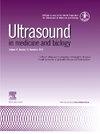平滑和漂移补偿对胎儿应变的影响。
IF 2.4
3区 医学
Q2 ACOUSTICS
引用次数: 0
摘要
目的:本研究的目的是评估用户调节的图像处理设置(空间平滑、时间平滑和漂移补偿)对胎儿左心室应变的影响。方法:对34例胎儿进行四室心镜观察,获得左室平均纵应变,其中30例胎儿质量较好。共测试了18种不同的空间平滑、时间平滑和漂移补偿设置。在每个设置下,计算30个胎儿的平均应变,从而可以检查在不同设置下胎儿应变是否存在平均差异。此外,评估18种设置中每个胎儿的最高应变值和最低应变值之间的差异(最小-最大差异)。然后计算30个胎儿的平均最小-最大差异,以计算平滑设置导致的胎儿应变的平均差异。结果:平滑设置和漂移补偿的平均效果较小。然而,当检查由不同设置引起的差异时,他们得出心内膜和心外膜层的平均比例差异约为18%,中壁层的平均比例差异约为15%。结论:本研究表明,虽然不同的平滑设置和漂移补偿的平均影响较小,但它们在个体水平上引起了应变值的显著差异。我们建议审查员在平滑和漂移补偿设置方面保持一致。本文章由计算机程序翻译,如有差异,请以英文原文为准。
The Effect of Smoothing and Drift Compensation on Fetal Strain
Objective
The aim of this study was to assess the effect of user-regulated image-processing settings (spatial smoothing, temporal smoothing and drift compensation) on fetal left ventricular strain.
Methods
Left ventricular average longitudinal strain was acquired from the four-chamber view of the fetal heart from 34 fetuses, with 30 fetuses presenting adequate quality. A total of 18 different settings for spatial smoothing, temporal smoothing and drift compensation were examined. At each setting the average strain for the 30 fetuses was calculated, whereby one could examine whether there was an average difference in fetal strain at the different settings. Furthermore, the difference between the highest and lowest strain values across the 18 settings was assessed for each fetus (min-max difference). The average min-max difference was then calculated across the 30 fetuses to calculate the mean discrepancy in fetal strain due to smoothing settings.
Results
The average effect of the smoothing settings as well as drift compensation by them was small. However, when examining the discrepancy induced by the different settings together, they induced average proportional differences of approximately 18% for the endocardial and epicardial layers and 15% for the mid-wall layer.
Conclusion
This study shows that while the average effect of different smoothing settings and drift compensation was small, they induced significant discrepancy in strain values on the individual level. We recommend that examiners be consistent with regard to smoothing and drift compensation settings.
求助全文
通过发布文献求助,成功后即可免费获取论文全文。
去求助
来源期刊
CiteScore
6.20
自引率
6.90%
发文量
325
审稿时长
70 days
期刊介绍:
Ultrasound in Medicine and Biology is the official journal of the World Federation for Ultrasound in Medicine and Biology. The journal publishes original contributions that demonstrate a novel application of an existing ultrasound technology in clinical diagnostic, interventional and therapeutic applications, new and improved clinical techniques, the physics, engineering and technology of ultrasound in medicine and biology, and the interactions between ultrasound and biological systems, including bioeffects. Papers that simply utilize standard diagnostic ultrasound as a measuring tool will be considered out of scope. Extended critical reviews of subjects of contemporary interest in the field are also published, in addition to occasional editorial articles, clinical and technical notes, book reviews, letters to the editor and a calendar of forthcoming meetings. It is the aim of the journal fully to meet the information and publication requirements of the clinicians, scientists, engineers and other professionals who constitute the biomedical ultrasonic community.

 求助内容:
求助内容: 应助结果提醒方式:
应助结果提醒方式:


